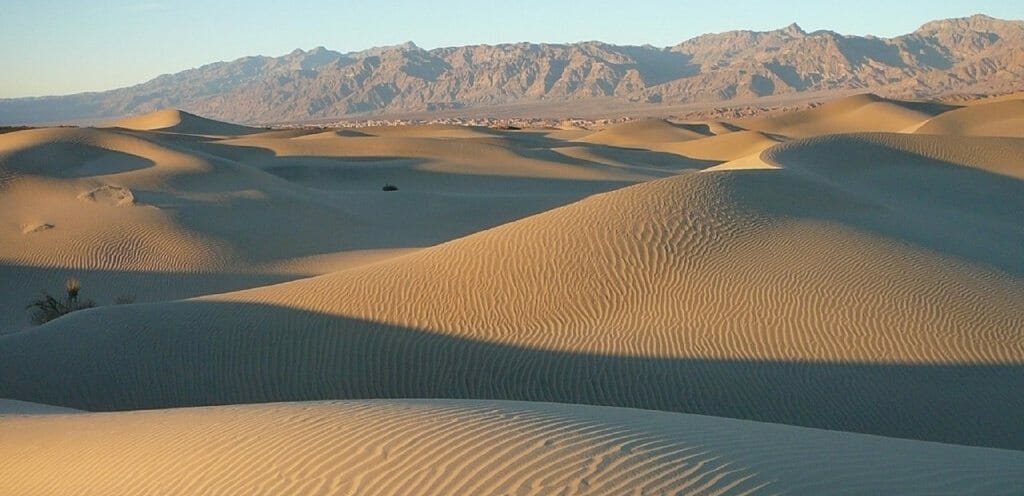
Located in California just east of the Sierra Nevada is Death Valley National Park, the hottest, driest, and lowest point in the entire nation! This national park is located within the Mojave and Colorado Deserts Biosphere Reserve and is actually the largest national park outside of Alaska, sitting at 3.4 million acres. The park is located partially in a below sea-level basin and deals with steady drought and record summer heat, making it a true land of extremes. After seeing the shimmering valley floor in the extreme heat you will also see the towering peaks of Mt. Panamint frosted with winter snow. Rare rainstorms spark fields upon fields of wildflowers as well, and small lush oases shelter tiny fish and wildlife. There is surprisingly a large and great diversity of life within Death Valley!
Over 1,000 species of plants thrive in Death Valley, more than 50 of them being endemics that are only found here! You will see plenty of creosote bush, bighorn sheep in the higher mountain elevations, and desert coyotes. Most animals here are nocturnal to deal with the heat, which dominates the park for five months every year. In 1917, this location saw 52 consecutive days at or above 120 degrees Fahrenheit, giving the phrase "long hot summer" a completely new meaning! If they aren’t nocturnal they are probably mountain animals like the bighorn sheep, who thrive in the higher, cooler, and more moist environment of the 11,000 foot Panamint mountain. Here you will see multiple woodlands of juniper, pinyon pine, mountain mahogany, limber pine, and bristlecone pine.
Your group will have a blast exploring the colorful badlands, snow peaks, sand dunes, rugged canyons, salt-flats, low valley floors, and few lush oases within Death Valley. 91% of this massive park is designated wilderness area, so your group definitely won’t run out of recreational things to do here. You can hike, bike, climb, or geo-trek your way through a trail before heading over to the Borax Museum to learn more about the history of this park including the Timbisha people, gold fields, and tourism spark. You can also head over to the Furnace Creek Visitor Center for more ecological and geological information - some rocks here are 1.7 billion years old! Be sure to bring plenty of water for your whole group before coming and wear light clothes to beat the summer heat!


